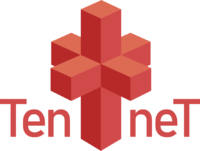ANLY482 AY2017-18T2 Group10 Project Overview
Sponsor Background
Our sponsor is a food-service organisation that owns and manages various renowned restaurant brands. The group was founded in the 1980s in Singapore, starting with a fine-dining Korean restaurant for its first brand. Since then, it has evolved into different concepts, with further overseas expansion. Under these concepts, the group has a total of 13 outlets in Singapore.
Project Overview
For the scope of our practicum, we will be focusing only on the Singapore operations of one particular concept. Currently, our sponsor company is not able to accurately determine the amount of ingredients to order for their chain of restaurants. It is often based on guesswork and gut feeling which has often led to excessive holding costs as well as food wastage and in some cases, shortage of ingredients. This is not ideal as it may lead to various issues such as cost due to the non-freshness of the product, throwing of food due to expiry, not enough space in storage, the inability to satisfy customer demand, etc. We will be utilising inventory, Programmable Logic Unit (PLU) and sales data to forecast demand of customers and also for each ingredient. As there is a long list of ingredients, we will be focusing on the more popular ingredients first. After predicting the likely amount to order for each ingredient, we will develop a user-friendly application which enables the staff working in each outlet to easily view the predicted amount to order for each ingredient.
Project Objectives
Our main objective is to develop an application which helps individual outlets forecast the amount of ingredients needed for the next order cycle. This application would be based on a predictive model that we will develop and refine. With this application, the staff can more accurately gauge the optimal inventory quantity and order quantity and not need to rely on gut feeling from previous experience, as is the existing practice. In summary, our business goal is to ensure accurate and optimal orders to fulfil storage, optimising storage space for each individual outlet.
Motivations
There have been several areas of concern raised by our sponsor pertaining to inventory management. In particular, achieving a balance between not holding excessive inventory and ensuring that there are sufficient items for customers at all times. Additionally, ingredients should not be kept for too long as this has a negative impact on its freshness and may result in the disposal of it. By predicting the amount to order, we would also reduce wastage and be more environmentally friendly. Lastly, to reduce cost attributed to food wastage, as well as reducing the time taken by the staff to determine the order quantity for the various outlets.
From our group’s perspective, we hope to learn various soft skills, such as requirement gathering, asking the right questions and stakeholder management. In addition, we believe that through this, we will be able to apply what we learnt about analytics into a real world project from start to finish. Lastly, we want to cultivate an independent learning attitude in our team and to be open to new methods and ideas.
Stakeholders
Anonymous, Chief Executive Officer of Company XYZ Anonymous, Chief Strategy Officer of Company XYZ Anonymous, Chief Operations Officer of Company XYZ Anonymous, IT Manager of Company XYZ Mdm Meenakshi Gopalakrishan, SIS Instructor, Project Supervisor
